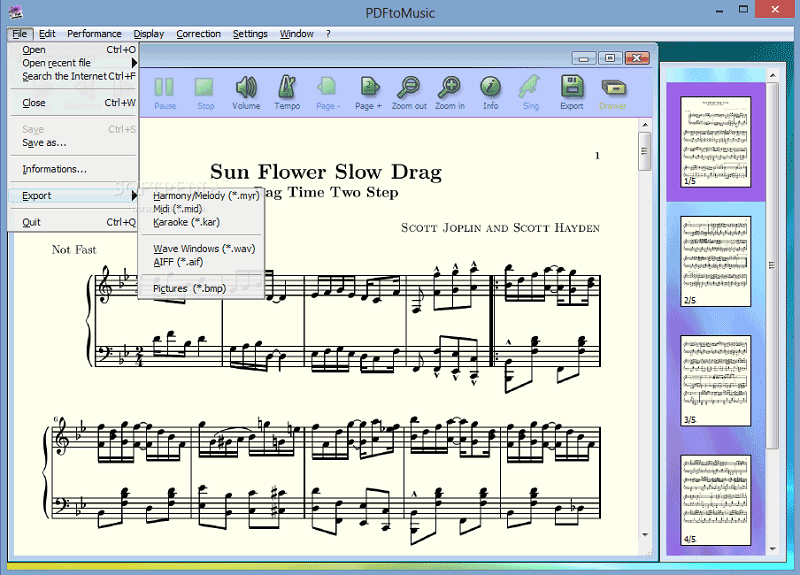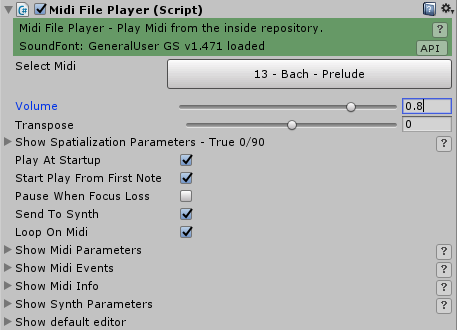| Settings for Channel | Close |

| Reverb | 3-band Equalizer| Gain (db) | Frequency | Bandwidth | | EQ #1 |
| Resonance | 1st
Frequency | Attack
Time | 2nd
Frequency | Decay
Time | 3rd
Frequency | Release
Time | | Low-pass Filter |
| Waveform | Frequency | Depth | | LFO Modulation |
LFO Modulation
Destinations | Pitch | Amplitude | Filter Cutoff |
|
| Custom Audio File or YouTube Video Keyboard Mappings | Close |
Click [Upload Audio] to assign an Audio File to a Note, or [Select Video] to assign a YouTube Video ID to a Note,
which you can play with the Custom Mappings instrument.
| Note | Audio File or YouTube Video ID | Data Size | Duration |
|---|
| C0 | | C#0 | | D0 | | D#0 | | E0 | | F0 | | F#0 | | G0 | | G#0 | | A0 | | A#0 | | B0 | | C1 | | C#1 | | D1 | | D#1 | | E1 | | F1 | | F#1 | | G1 | | G#1 | | A1 | | A#1 | | B1 | | C2 | | C#2 | | D2 | | D#2 | | E2 | | F2 | | F#2 | | G2 | | G#2 | | A2 | | A#2 | | B2 | | C3 | | C#3 | | D3 | | D#3 | | E3 | | F3 | | F#3 | | G3 | | G#3 | | A3 | | A#3 | | B3 | | C4 | | C#4 | | D4 | | D#4 | | E4 | | F4 | | F#4 | | G4 | | G#4 | | A4 | | A#4 | | B4 | | C5 | | C#5 | | D5 | | D#5 | | E5 | | F5 | | F#5 | | G5 | | G#5 | | A5 | | A#5 | | B5 | | C6 | | C#6 | | D6 | | D#6 | | E6 | | F6 | | F#6 | | G6 | | G#6 | | A6 | | A#6 | | B6 |
|
You can receive a unique URL which will cause your midi file to be automatically Imported. You can display that URL on your social network pages, so anyone can create mixes of your song.
We will be adding selected midi files to the [Load Sample] dropdown (on the upper-right portion of the screen). When someone loads your file from that dropdown, your name (and a link to your website) will be shown at the top of the screen.
To use these features, close this dialog and click the Register link on the upper-right corner of the screen (or Login if you have already registered). |
Registering will allow you to receive your own unique URL addresses,
which will cause your midi files to be automatically Imported.
| Email | | Username | | Password | URL (optional, will display
your Username as a link) |
|
New Song Title (maximum 12 alphanumeric characters)
| Your Shared SongsYou do not have any Shared Songs. |
Your Profile| Email: | | Username | URL (optional, will display
your Username as a link) | New Password
(only enter if you want to change) |
|
|
| Please Make A Donation | Close |
It costs money to offer great sounds for free. Every time you load a song, each instrument requires about 1MB of bandwidth.
If you would like us to continually offer new sounds and improve the 128 instruments, then we need your help.
Please click the orange [Donate] button at the top of the screen, and contribute towards this free website.
Thank you! |
| Select YouTube Video | Close |
| YouTube Video ID | | Start Seconds | | End Seconds |
|
- The MIDI file format stores notes at an incredibly high time resolution: microseconds. When you record your songs live into your MIDI editor by playing your MIDI instrument, if you don't have it set up do at least a little quantization—that is, 'snapping' your notes to the nearest half or quarter beat—their start and end durations won't.
- Free online MIDI Editor for creating polyphonic ringtones from scratch,increase,decrease,change ringtone volume,edit the desired portion of a midi file,converting from polyphonic ringtone to truetone and truetone to polyphonic ringtone formats,transpose octave,change tempo of MIDI etc.
- Upload MIDI File Keep in mind that not all MIDI files will work well! Many MIDI files use features that are not supported by the sequencer; simple ones work best.
Introduction


How to edit the tempo of a MIDI file? I have a.mid file; when opened it will play at a tempo of 60 BPM. I want to change that to 120. Not that it plays faster at 120 BPM. I try to find '60' with all kinds of text editors, to change that to 120. But I can't read the code (text). Please help me figure it out. Jul 29, 2016 4 Answers4. Standard MIDI files are in binary (see the specification ), so you cannot open them directly in a text editor. There are tools to convert between the.mid format and some text format (e.g., mid2asc, midicomp ), but it might be a better idea to open the file in a MIDI sequencer.
Midi File Editor

MidiEditor is a free software providing an interface to edit, record, and play Midi data.
The editor is able to open existing Midi files and modify their content. New files can be created and the user can enter his own composition by either recording Midi data from a connected Midi device (e.g., a digital piano or a keyboard) or by manually creating new notes and other Midi events. The recorded data can be easily quantified and edited afterwards using MidiEditor.
Features
- Easily edits, records and plays Midi files
- can be connected to any Midi port (e.g., a digital piano or a synthesizer)
- Tracks, channels and Midi events can be edited
- Event quantization
- Control changes can be visualized
- Automatic Updates
- Free
- Available for Windows and Linux
Note
MidiEditor was developed by Markus Schwenk. It is entirely written in C++ (Qt) and is available for the platforms Linux and Windows. Should MidiEditor be a software which is helpful for you and which you use often, please let the developer and other users know by providing feedback. Moreover, the developer worked on MidiEditor in his (rare) sparetime and offers it for free. So, when you feel like it, pay him a coffee (or two). Please also feel free to contact the developer in case you have any ideas which could help to improve the editor or in the case you found any bugs you want the developer to fix.
Suggestion, Improvements, Bugreports...
Please feel free to contact the developer if you have any suggestions! Please also reach out to the developer if you found a bug.
Midi File Editor Free Download
Project Page
Midi File Editor Program

Midi File Editor Mac
Here you can find the project page on github. You will find the code and a way to provide feedback.




